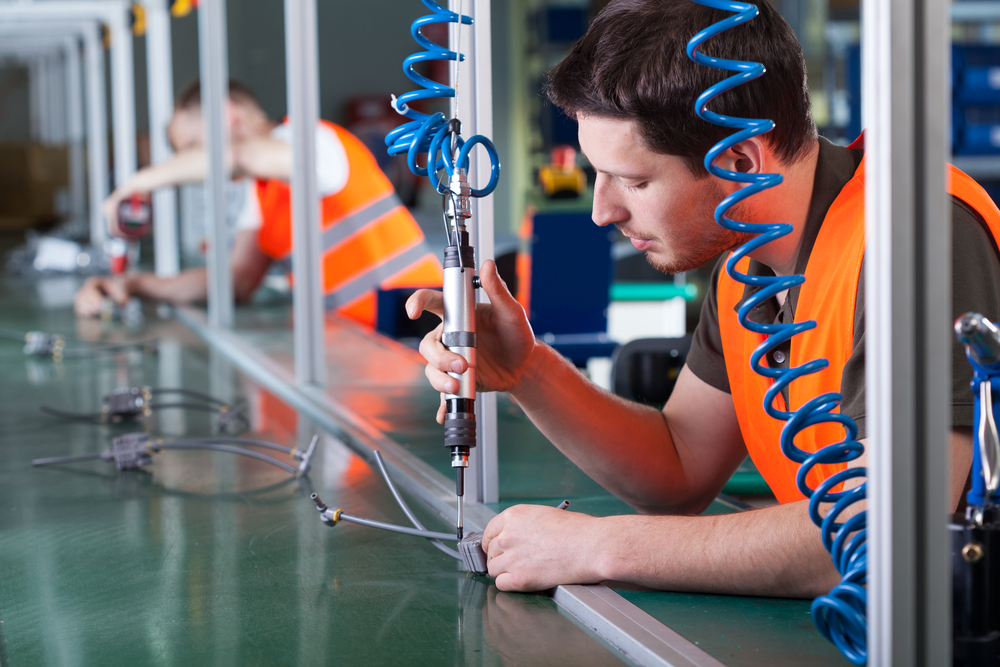Future-proofing any industry is strenuous at any time, but it’s especially true in times of crisis. Here’s how manufacturers can maintain an innovative edge given our present circumstances.
Even as the manufacturing industry enters its most innovative era, it’s enduring its most difficult one—as, of course, all industries are.
Industry 4.0, our now fourth industrial revolution, has introduced the most cutting-edge, modern pieces of tech and innovative practices, including:
• Automation,
• Horizontal and vertical system integration, and
• 3D printing.
However, the present circumstances are making it difficult for manufacturers to stay ahead of the curve, as 53.1% of companies are anticipating a change in operations and 35.5% are actively experiencing supply chain disruptions.
Manufacturers can try and maintain normal operations in abnormal circumstances, but they’re better off using this time to reorganize and shift their focus on both short- and long-term success.
Below are some practices manufacturers can exercise during this time to maintain an innovative edge now and in the future.
Workforce retraining and upskilling
For all industries, upskilling in your current employees—recognizing their current skills and potential and retraining them for more necessary roles—is one of the most cost-effective ways to align your workforce with industry changes.
Replacing employees is costly, often costing companies 6 to 9 months’ worth of that employees’ salary to get them up to speed. By investing time and some resources into improving your current employees’ skills, you add more purpose to their roles and boost their engagement—relevant results considering boredom was 2018’s main cause for turnover.
It may not reap the most immediate results, as employees must to successfully go through their personalized retraining program. But in manufacturing, as technology continues evolving, it’s necessary for employees to continue learning and for organizations to accelerate and adapt to new processes.
Retooling factories
The smart factory is the ultimate goal for any modern manufacturer: A factory where its physical production processes are intertwined with digital processes.
Some ways this could take shape include:
• Integrating real-time production with inventory so as to align expenses with supply chain distributors.
• Using automated robots for low-impact, repetitive processes.
• Gathering efficacy data via sensors.
Of course, it’s easier to say, Buy and implement this piece of tech! than it is to actually do it, but such retooling actually starts at a more basic level: Talking about processes competitors are utilizing across your organization and using your current tools to, to the best of their ability, to match those processes.
Which brings us to our last point that synthesizes the above two: creating and maintaining a culture of sharing.
Creating and maintaining a culture of sharing
Organization leaders are great at thinking strategically on a large-scale, but often that thinking is done in a silo.
Strategy shouldn’t be entirely theoretical. You need to take action, especially in times where the clock seems to be ticking louder and faster.
When your organization does take action, taking a bottom-up approach makes the most sense. After all, your employees are the ones that will be enacting any of the changes you introduce.
As such, have undoubtedly valuable input on how to make those changes more effective based on their responsibilities. Even if you have budget restrictions, your employees can help guide your organization in the right direction, preventing you from spending on ineffective tools down the line.
If any factory wants to introduce [Industry] 4.0 or a smart factory … it has to be a top-down, bottom-up approach … It must be both sides. That would be the biggest key to success.
“Implementing the smart factory,” Deloitte Insights
Employees want to share their ideas valuable ideas to if management actively listens—if a culture of sharing, a culture of innovation, is created and maintained.


